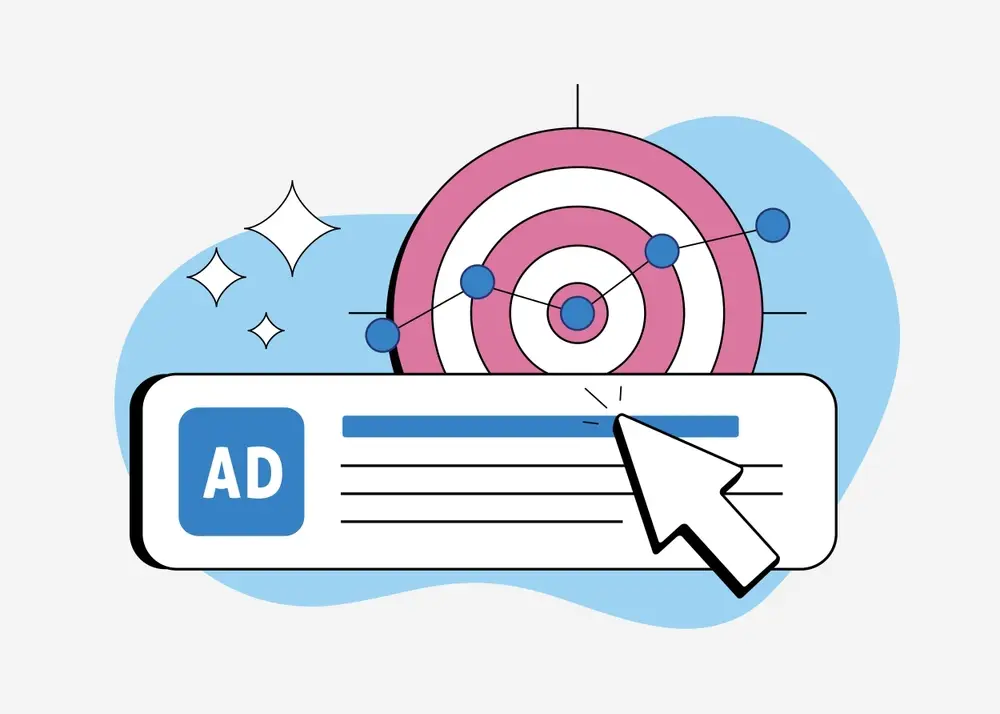Maximising ROI with Targeted PPC Campaigns -A Step-by-Step Approach

In the competitive world of digital marketing, pay-per-click (PPC) advertising stands out as a powerful tool for driving targeted traffic and achieving a high return on investment (ROI). With the right approach, PPC campaigns can deliver impressive results, from increasing website traffic and generating leads to boosting sales and enhancing brand visibility. However, to maximise ROI, it’s essential to implement a targeted and strategic approach. In this comprehensive guide, we’ll walk you through a step-by-step approach to maximising ROI with targeted PPC campaigns, covering everything from campaign planning and keyword research to optimisation and analysis.
1. Understanding PPC Advertising
Pay-per-click (PPC) advertising is a form of online marketing where advertisers pay a fee each time their ad is clicked. It’s a model that allows businesses to bid on keywords relevant to their products or services, displaying their ads on search engine results pages (SERPs), social media platforms, and other websites. The primary goal of PPC advertising is to drive targeted traffic to your website and achieve specific business objectives, such as increasing sales, generating leads, or boosting brand awareness.
1.1 Benefits of PPC Advertising
- Immediate Results: Unlike organic search engine optimisation (SEO), which can take time to yield results, PPC campaigns can generate traffic and leads almost immediately after launching.
- Highly Targeted: PPC allows you to target specific keywords, demographics, locations, and interests, ensuring that your ads reach the most relevant audience.
- Control Over Budget: With PPC, you have control over your budget and can set daily or monthly limits to manage your advertising spend.
- Measurable ROI: PPC platforms provide detailed analytics and reporting, enabling you to track performance, measure ROI, and make data-driven decisions.
2. Planning Your PPC Campaign
Effective PPC campaigns start with thorough planning. A well-defined strategy helps ensure that your campaigns are aligned with your business goals and target audience, setting the stage for maximising ROI.
2.1 Define Your Objectives
Before launching a PPC campaign, it’s crucial to define clear and measurable objectives. Your goals will guide your campaign strategy and determine the key performance indicators (KPIs) to track. Common PPC objectives include:
- Increasing Website Traffic: Driving more visitors to your website to increase brand visibility and engagement.
- Generating Leads: Capturing contact information from potential customers for follow-up and nurturing.
- Boosting Sales: Driving conversions and increasing revenue through targeted advertising.
- Enhancing Brand Awareness: Increasing visibility and recognition of your brand among your target audience.
2.2 Identify Your Target Audience
Understanding your target audience is essential for creating effective PPC campaigns. Conduct market research to identify the demographics, interests, and behaviours of your ideal customers. Consider factors such as:
- Demographics: Age, gender, income, education, and occupation.
- Geographic Location: Targeting specific regions, cities, or countries based on your market.
- Interests and Behaviour: Interests, online behaviour, and purchasing habits.
Use this information to create audience personas that will inform your ad targeting and messaging.
2.3 Choose the Right PPC Platform
Several PPC platforms are available, each offering different features and targeting options. The choice of platform depends on your objectives and target audience. Popular PPC platforms include:
- Google Ads: The largest PPC platform, offering search ads, display ads, video ads, and more. Ideal for capturing high-intent search traffic.
- Bing Ads: Microsoft’s advertising platform, providing similar features to Google Ads with potentially lower competition and cost-per-click (CPC).
- Facebook Ads: A social media platform that allows for highly targeted advertising based on user demographics, interests, and behaviours.
- LinkedIn Ads: Suitable for B2B advertising, offering targeting based on job title, industry, company size, and more.
- Instagram Ads: Ideal for visual content and targeting younger audiences through image and video ads.
Select the platform(s) that align with your goals and audience preferences.
3. Keyword Research and Selection
Keyword research is a critical component of PPC campaign success. Identifying and selecting the right keywords ensures that your ads are shown to users searching for relevant products or services.
3.1 Conduct Keyword Research
Use keyword research tools such as Google Keyword Planner, SEMrush, or Ahrefs to identify keywords relevant to your business. Consider the following types of keywords:
- Broad Match Keywords: General terms related to your products or services. For example, “shoes” or “digital marketing.”
- Phrase Match Keywords: More specific phrases that include your target keywords. For example, “running shoes” or “digital marketing services.”
- Exact Match Keywords: Highly specific keywords that match the exact search query. For example, “buy red running shoes” or “affordable digital marketing services.”
- Long-Tail Keywords: Longer, more specific phrases that often have lower competition and higher conversion potential. For example, “best running shoes for flat feet” or “digital marketing services for small businesses.”
3.2 Analyse Keyword Metrics
Evaluate the potential of each keyword based on metrics such as:
- Search Volume: The number of searches for a keyword per month. Higher search volume indicates greater demand but may also mean higher competition.
- Competition: The level of competition among advertisers bidding for a keyword. High competition often leads to higher CPC.
- Cost-Per-Click (CPC): The average cost you’ll pay for each click on your ad. Higher CPC may indicate higher competition or greater value.
- Conversion Rate: The percentage of users who take a desired action after clicking on your ad. Keywords with higher conversion rates are more likely to deliver a positive ROI.
3.3 Create a Keyword List
Compile a list of target keywords based on your research and analysis. Organise them into relevant ad groups based on themes or categories. This will help you create targeted ads and landing pages that match user intent.
4. Crafting Compelling Ad Copy
Your ad copy plays a crucial role in attracting clicks and driving conversions. Well-crafted ad copy should be relevant, engaging, and aligned with your target audience’s needs and interests.
4.1 Write Attention-Grabbing Headlines
The headline is the first thing users see in your ad, so it’s essential to make it attention-grabbing and relevant. Include your primary keyword and highlight the unique value proposition of your product or service. Consider using action-oriented language to encourage users to click.
4.2 Develop Persuasive Ad Descriptions
The ad description provides additional information and reinforces the headline. Focus on the benefits of your product or service, address potential pain points, and include a clear call-to-action (CTA). Ensure that your ad description aligns with the user’s search intent and leads them to a relevant landing page.
4.3 Utilise Ad Extensions
Ad extensions are additional pieces of information that enhance your ad and provide users with more options. Common ad extensions include:
- Sitelink Extensions: Additional links to specific pages on your website, such as product categories or special offers.
- Call Extensions: A phone number that users can click to call your business directly.
- Location Extensions: Your business address and map location, useful for driving foot traffic.
- Callout Extensions: Short, additional text that highlights unique selling points or promotions.
Using ad extensions can improve your ad’s visibility, increase click-through rates (CTR), and provide users with more information.
5. Designing Effective Landing Pages
A well-designed landing page is crucial for converting visitors into leads or customers. The landing page should be relevant to the ad, provide a clear value proposition, and encourage users to take the desired action.
5.1 Ensure Relevance and Consistency
Your landing page should be directly related to the ad and match the user’s search intent. Ensure that the headline, content, and design are consistent with the ad copy to create a cohesive user experience. This relevance helps improve conversion rates and quality scores.
5.2 Create a Clear Call-to-Action
The call-to-action (CTA) is a critical element of your landing page, guiding users toward the desired action. Make your CTA prominent, actionable, and specific. For example, use phrases like “Get a Free Quote,” “Sign Up Now,” or “Shop Now.” Ensure that the CTA stands out visually and is easy to find.
5.3 Optimise for Mobile
With a growing number of users accessing websites via mobile devices, it’s essential to ensure that your landing page is mobile-friendly. Optimise your landing page design for various screen sizes, ensure fast loading times, and provide a seamless experience across devices.
5.4 Implement Conversion Tracking
Set up conversion tracking to monitor the effectiveness of your landing page and PPC campaigns. Use tools like Google Analytics or conversion tracking pixels to track user interactions and measure conversions. This data helps you evaluate the performance of your landing page and make data-driven improvements.
6. Managing and Optimising Your PPC Campaigns
Ongoing management and optimisation are crucial for maximising ROI from your PPC campaigns. Regularly reviewing and adjusting your campaigns helps improve performance, reduce costs, and achieve better results.
6.1 Monitor Key Metrics
Track key performance metrics to evaluate the effectiveness of your PPC campaigns. Important metrics include:
- Click-Through Rate (CTR): The percentage of users who click on your ad after seeing it. A higher CTR indicates that your ad is relevant and engaging.
- Cost-Per-Click (CPC): The average cost you pay for each click on your ad. Monitor CPC to manage your budget and optimise bids.
- Conversion Rate: The percentage of users who complete a desired action after clicking on your ad. A higher conversion rate indicates that your landing page and ad are effective
.
- Cost-Per-Conversion: The average cost of acquiring a conversion. This metric helps you evaluate the efficiency of your ad spend.
6.2 Adjust Bids and Budget
Based on performance data, adjust your bids and budget to optimise your campaigns. Increase bids for high-performing keywords or ad groups to maximise visibility, and decrease bids for underperforming ones to reduce costs. Reallocate budget based on the success of different campaigns or platforms.
6.3 Refine Targeting
Continuously refine your targeting settings to improve campaign performance. Analyse data on user demographics, geographic locations, and interests to identify areas for optimisation. Adjust targeting options to focus on high-value audiences and exclude irrelevant traffic.
6.4 Test and Optimise Ad Copy
Regularly test different variations of your ad copy to identify the most effective messaging. Conduct A/B tests with different headlines, descriptions, and CTAs to determine which versions drive the highest CTR and conversions. Use the results to optimise your ad copy for better performance.
6.5 Optimise Landing Pages
Continuously test and optimise your landing pages to improve conversion rates. Conduct A/B tests with different layouts, content, and CTAs to determine what resonates best with your audience. Monitor user behaviour and feedback to identify areas for improvement.
6.6 Analyse and Learn
Regularly review campaign performance data and analyse trends to gain insights into what’s working and what’s not. Use this information to inform future campaigns and refine your PPC strategy. Stay updated with industry trends and platform changes to adapt your approach as needed.
7. Conclusion
Maximising ROI with targeted PPC campaigns requires a strategic and data-driven approach. By defining clear objectives, conducting thorough keyword research, crafting compelling ad copy, designing effective landing pages, and continually optimising your campaigns, you can achieve impressive results and drive significant value for your business.
PPC advertising offers the advantage of immediate results and precise targeting, but success depends on careful planning and ongoing management. Implementing the step-by-step approach outlined in this guide will help you optimise your PPC campaigns, improve performance, and achieve a high return on investment. Remember, the key to successful PPC advertising is to stay proactive, analyse data, and continuously refine your strategy to stay ahead of the competition and maximise your results.
Contact Us
You can contact us on Whatsapp:
or fill up the contact form





